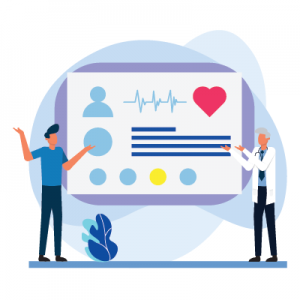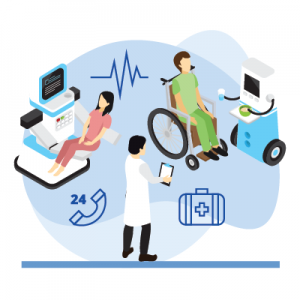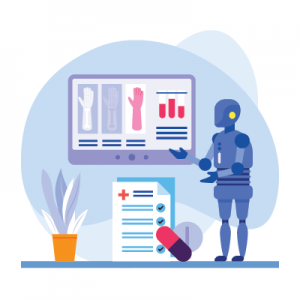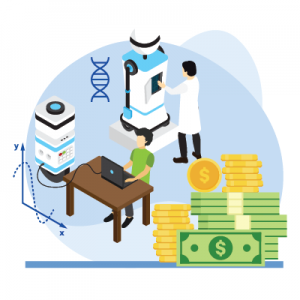The Pros and Cons of Using Artificial Intelligence in the Healthcare World
Artificial Intelligence (AI) has become an integral part of the healthcare industry in recent years. For example, it’s been used to improve patient experiences, reduce costs, and streamline various processes within healthcare organizations. But, there are pros and cons. Let’s take a simple, straightforward look at the implications of using AI software in the healthcare world.
The Pros of Using AI
The most obvious benefit of utilizing AI technology is its ability to improve patient experiences. AI can be used for diagnostics, helping physicians make more accurate and consistent diagnoses faster than ever before. It can also be used to provide real-time feedback about a patient’s condition or progress during treatment (remote patient monitoring), allowing doctors to quickly adjust treatments if needed. And, it can predict which treatments will be most effective for specific patients based on their individual medical history and genetics, further improving accuracy.
Another major pro is cost savings for healthcare providers. By leveraging machine learning algorithms and automated processes, hospitals can reduce labor costs while still providing high-quality care. Additionally, by using predictive analytics, hospitals can forecast equipment needs more precisely and allocate resources accordingly. This not only reduces costs, but also increases efficiency within the organization as a whole.
AI technologies can help streamline many processes within the healthcare system itself. From managing clinical data and scheduling appointments to telehealth services and maintaining medical records, automation powered by artificial intelligence can help streamline tedious tasks that would otherwise require significant manual effort from staff members—which can ultimately reduce labor costs and increase overall efficiencies.
The Cons of Using AI
While there are certainly many benefits associated with artificial intelligence in healthcare settings, there are some potential drawbacks. For instance, AI algorithms may not always produce accurate results due to inherent biases that exist within certain datasets or systems. This can lead to misdiagnoses or incorrect prescriptions being issued by physicians relying on such data sets for decision-making purposes. For this reason, it’s important for organizations using these technologies to regularly monitor their algorithms for accuracy and bias issues over time. Any potential errors should be addressed quickly and appropriately before they cause harm or disruption within the organization itself or its patient base.
Implementing artificial intelligence technologies requires significant investments in hardware infrastructure and personnel training. Unfortunately, this can present financial challenges for smaller hospitals or clinics with limited budgets or fewer resources available for such initiatives. It’s important that organizations carefully consider their available options before investing in any new technologies or systems. This will ensure that money is not wasted on unnecessary investments or upgrades that won’t actually provide value to your organization over time.
Conclusion
While utilizing AI in healthcare may have drawbacks, the benefits outweigh them when properly implemented, monitored by trained personnel, and integrated with established organizational processes. Artificial intelligence can be a powerful tool for improving patient experiences, reducing operational costs, increasing organizational efficiency, and a great way to drive better health outcomes.
IT firms can benefit by understanding the pros and cons of healthcare tech to help clients implement it more efficiently. This serves as a starting point for the successful adoption and use of these tools. With continued advancements expected over time, it will be interesting and exciting to see how far artificial intelligence takes us when it comes to improving global patient experience and overall health outcomes.

